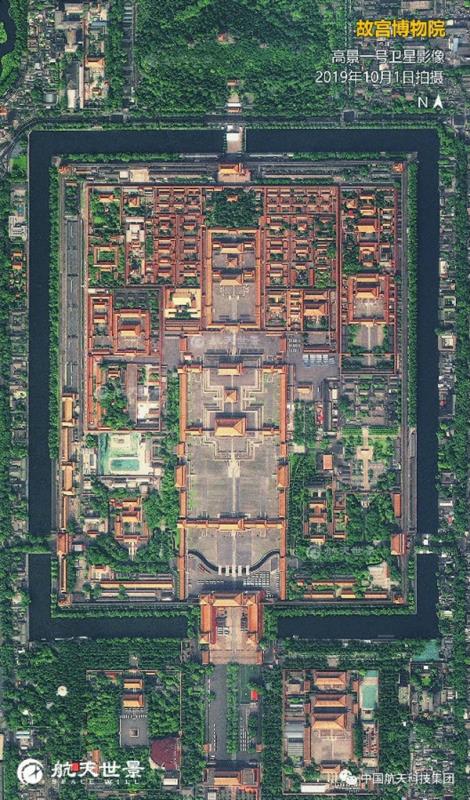The year 2020 is the 600th anniversary of the establishment of the Palace Museum, also known as the Forbidden City.
A result of ancient Chinese architectural ideas and urban construction concepts, it is also the largest and best preserved architectural complex of ancient palaces in the world.
It was listed as a UNESCO World Heritage site in 1987. Let's have a look at the historical cultural heritage site from space through the modern eyes of China's SuperView-1 satellite, or Gaojing 1.
Developed by the China Academy of Space Technology, a subsidiary of China Aerospace Science and Technology Corporation (CASC), the SuperView satellite system was China's first 0.5-meter high-resolution commercial remote sensing satellite constellation with complete proprietary intellectual property rights.
The satellites are now operated by CASC's China Siwei Surveying and Mapping Technology Co. Ltd.
The SuperView-1 01 and 02 satellites were launched by the Long March 2D carrier rocket, developed by CASC's Shanghai Academy of Spaceflight Technology, in December 2016 and January 2018.
The satellite system is capable of providing 24/7 remote sensing data and application system solutions to global users and has been widely used in government management, agriculture and forestry, resources and environment and emergency relief as well as emerging industries related to the internet, finance, and insurance.

The picture is an overview of the Palace Museum pictured by the SuperView satellite. Surrounded by 10-metre-high walls and a 52-metre-wide moat and measuring 961 meters from north to south and 753 meters from east to west, the Palace Museum has more than 980 palaces and 8,728 rooms. [Photo/sasac.gov.cn]